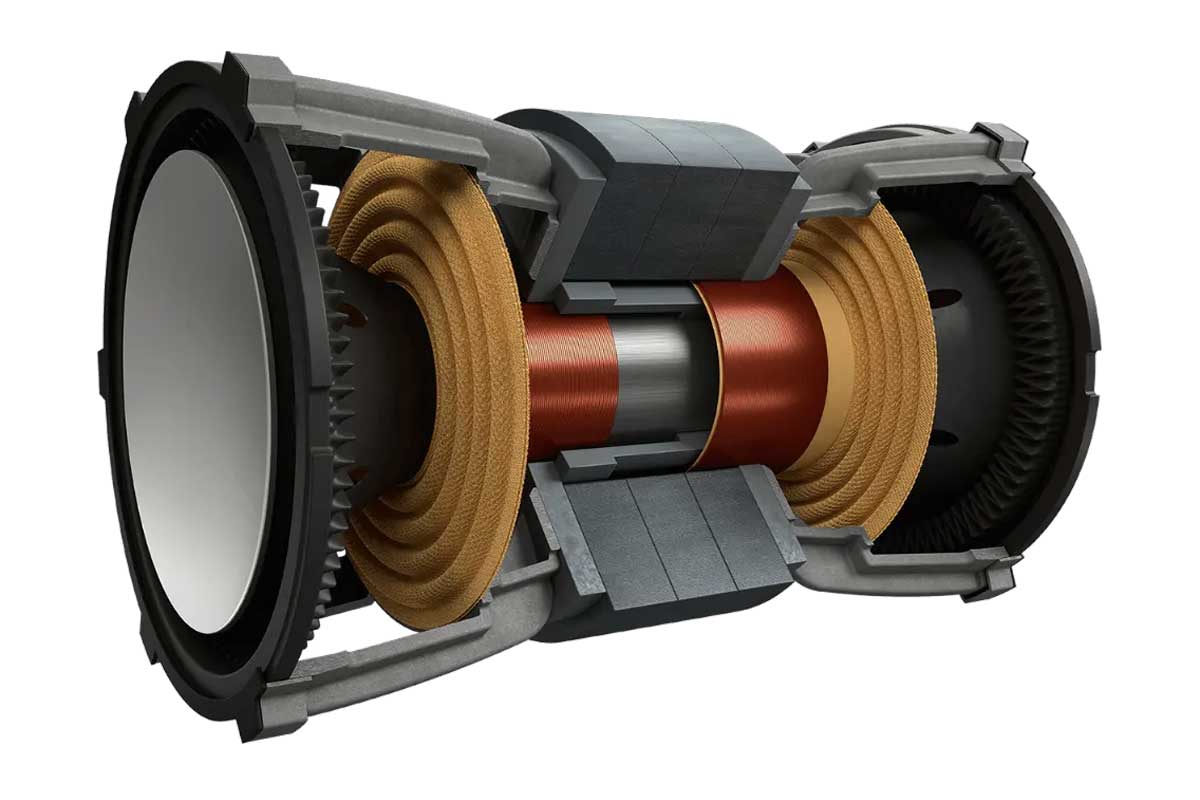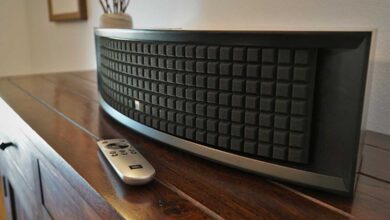
Targeting uncompromising performance in the smallest possible space, the new KEF Uni-Core Technology has been developed to allow a completely new interpretation of subwoofer and loudspeaker designs.
Just a few months ago, KEF announced a new, innovative technology for more accurate imaging of loudspeaker drivers, the so-called KEF Metamaterial Absorption Technology (MAT), also known as KEF META. Now comes the next big thing, KEF’s new Uni-Core technology, which is said to deliver the same groundbreaking results as KEF’s Meta technology, but this time it’s dedicated to the bass range.
KEF’s patent-pending Uni-Core Technology redefines the space required for high-performance loudspeaker systems and subwoofers. It combines two friction-locked drive units in a single motor system, with a special design that significantly reduces the size of the speaker or subwoofer cabinet. This makes it possible to create particularly powerful and therefore bass-strong loudspeaker systems with a much more compact form factor than before.
KEF is confident that the new KEF Uni-Core Technology can be used to create powerful yet unobtrusive loudspeaker systems and subwoofers that meet the needs of many users for systems that are easy to use in the home.
It clearly redefines the battle between size and performance in an unprecedented triumph of sound quality, the English loudspeaker specialists state literally in the corresponding press release.
“Delivering deep and loud bass from a compact product is a great technical challenge. The Uni-Core is a breakthrough technology for KEF because it allows us to pack two drivers into a tighter space without compromising their performance.”
Dr. Jack Oclee-Brown, Head of Research and Development at KEF
KEF’s new Uni-Core Technology is based first and foremost on a special driver arrangement: two so-called force-cancelling drivers are arranged concentrically, with overlapping voice coils providing bass performance in a smaller space. In addition, KEF Uni-Core Technology uses a single motor to drive both cones. The coils on each cone are of different sizes, which means that when the cones move backwards, the coils can occupy the same space in the cabinet. Overall, this means that the physical enclosure can be extremely compact and the volume is significantly reduced compared to using conventional driver technology.
The space saved, in turn, allows the drivers to have a far greater excursion than a conventional force-cancelling design of the same size, so more power and depth is achieved in much less space.
The company, which was founded in 1961 by Raymond Cooke, is still holding back on further details, but it does say that the new KEF Uni-Core technology will soon be found in new products. Further details will be announced this month.
I wonder if there’s a new KEF Blade… Who knows, the driver arrangement would be just made for their special form factor.
Getting to the point…
Once again KEF surprises with a new outstanding approach to loudspeaker development. KEF’s patent-pending Uni-Core Technology redefines the footprint of high-performance loudspeaker systems and subwoofers, KEF claims. It combines two friction-locked drive units in a single motor system, with a special construction design that significantly reduces the size of the loudspeaker or subwoofer cabinet. This makes it possible to create particularly powerful and therefore bass-strong loudspeaker systems with a much more compact form factor than before.
| Manufactorer: | KEF |
| Distribution: | GP Acoustics GmbH |






